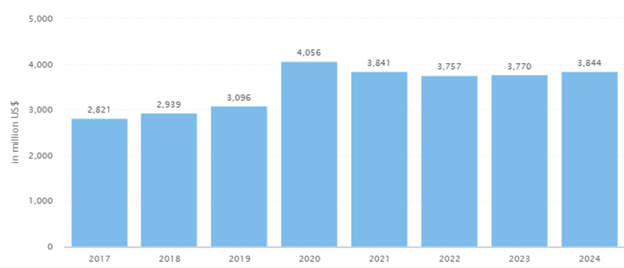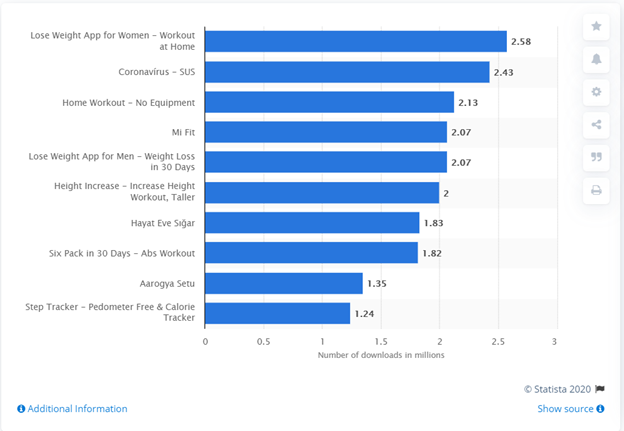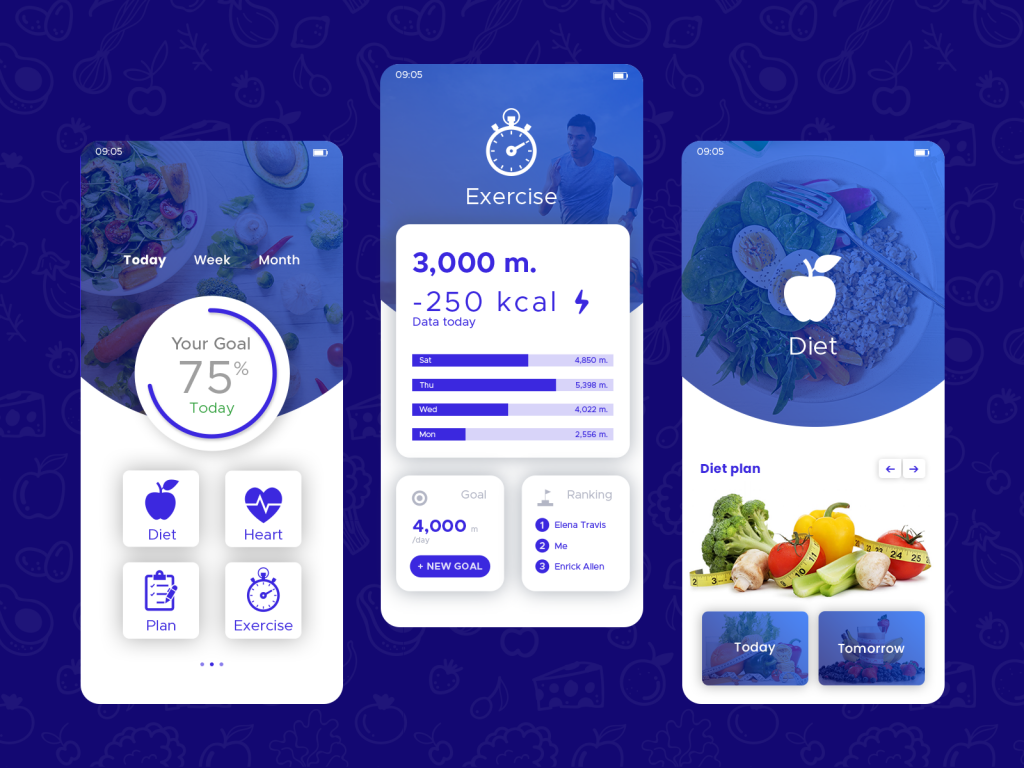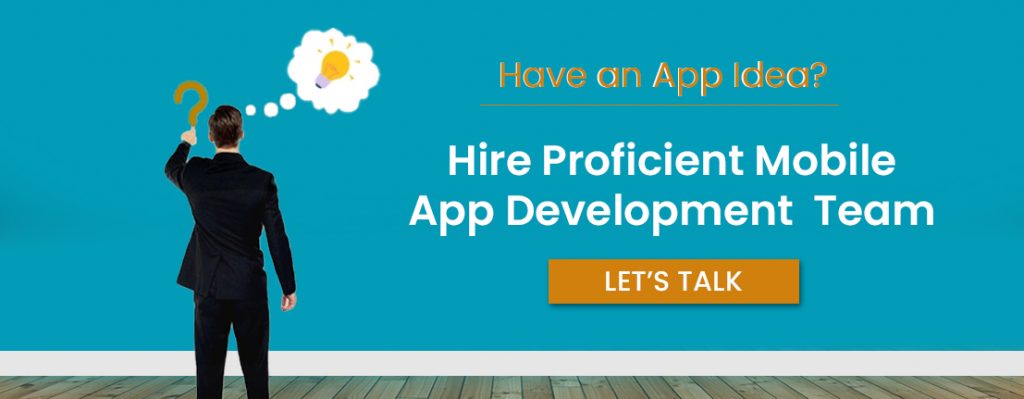The past few months amidst pandemic has been tormenting for most of us, especially for the fitness freaks who were missing shredding their bodies on the bulky equipment of gyms.
Analysts have seen a sudden surge in demand for health and fitness mobile applications during the lockdown period.
According to Sensor Tower, the apps from the health & fitness category generated around 329 million US Dollars.
People love to have their fitness mobile apps that help them stay to continue with their fitness regime. The increase in the demand for health and fitness apps has opened the doors of opportunities for mobile app development companies.
If you are planning to go for health and fitness mobile app development, then this is the right post for you. We are going to discuss everything related to health app development, features to include, development cost, technology stack, required team structure, and last but not the least, the types of fitness apps, which you can develop.
But, before that, let us first give you a brief of the health and fitness app market stats.
The Market Overview of Health and Fitness Mobile Applications
According to Polaris Market Research the global market size of the fitness mobile application was estimated at 3.15 billion US dollars at the end of the year 2019, and it is expected to reach 14.7 billion US dollars with a CAGR of 26.2% by 2026.
The Important Stats on Health & Fitness Mobile Apps Stats You Need To Know
- Wearable covers the biggest market segment, and the market value is expected to reach 18,984 US dollars by the end of 2020.
- In a report by Statista, wearable devices continue to earn billions of US dollars in the years to come.

- The number of fitness app users across the globe is expected to reach 378.7 million by 2021. (As per Statista)
- The overall revenue generated by health & fitness apps is expected to reach USD 4101 by the end of the year 2021.
Different Types of Health and Nutrition Mobile App Development
The stats, which were shown above, clearly depict that the coming years bring blooming opportunities for health and fitness mobile app development companies.
All you need to do is learn about the different types of health and fitness mobile apps. According to a study by Statista, here is the list of leading and most downloaded health and fitness apps around the world in 2020. All these apps, though belong to health & fitness domains but have different functionalities.

As you can see the lose weight app for women, namely – Workout at Home tops the list of most downloaded health and fitness apps in the world with 2.58 million downloads in 2020, followed by Coronavirus –SUS, and Home Workout – No Equipments on the second and third position respectively.
Fitness app development can be done in majorly three types. It is your choice to select which type of health and fitness app you want to develop.
1. Workout & Exercise App
These types of health and fitness mobile apps offer you a personal trainer on your smartphone. Evident to its name, these applications focus on workouts. It is one of the broadest categories in the fitness apps that help users to understand the type of exercise they can do and explain how to perform them.
Workout & exercise are further classified into three different categories:
1.1. Logbook Apps – These apps work as a mobile training journal where you can log your workout sessions. This logbook will help you prepare your own personalized training program.
The major players of logbook fitness mobile apps include Fitbod, Strong, HeavySet, Stacked,
1.2. Personal Trainer Apps – These types of mobile apps come with exercise routines in different formats like videos, illustrations, 3D models, or just texts. One of the best parts of this app is that it offers exercise modules that can be customized as per users’ requirements.
The top players in the personal trainer apps category include 6-week training, FitnessBuilder Plus, iWod Fitness, Sworkit, Asana Rebel, WODBook, and 7-minute workout, to name a few.
1.3. Fitness Apps with Device Pair Functionality – All those have the habit of wearing their wearable devices at the time of workout for them, this is the best option. The wearable device of a user collects all the data, and straight away shows up on the display of the smartphone.
Sworkit, Tone it up, and Freeletics are some of the major names that you can choose to select fitness app of this kind.
2. Nutrition & Diet Apps
These types of apps are the perfect choice if you want to monitor your food habits. With the help of these apps, you can easily count the number of calories burned or taken, water balance check, body weight, and many other diet-related functionalities.
Before you start your diet and nutrition app development, make sure you have complete knowledge about the same.
My fitness pal, Healthyout, Calorie counter & food diary, and My plate calorie tracker are some of the best nutrition apps you can check to get a better idea.
3. Activity Tracking Apps
The activity tracking health apps, evident to their name, can track every physical activity of a user ranging from the number of steps you have taken to the stairs climbed, and from the hours you have slept to the distance & speed at which you run & burn the calories.
One of the best parts of these apps is that these apps can be paired with wearable devices quite easily.
The major names in the activity tracking health apps include names like Run keeper, Strava, Couch to 5K, and Yoga studio to name a few.

Essential Features of Health and Fitness Mobile App
In a study, it has been found that health and fitness apps have earned millions of dollars in revenue in the past few months. All these apps are equipped with some essential and great features. Here are some top features that you should include at the time of fitness app development:
| Admin Panel | Trainer Panel | Customer Panel |
| Secured login | Dedicated panel | Easy registration |
| Trainer management | Track pre-work out details | Schedule work out plans |
| Run promotions | Manage trainees | Live chat with trainers |
| View attendance of trainers & trainees | Send push notifications | Share & store data |
| Report management | Video consultation | Track miles, diet, calories burned & intake |
| Run loyalty programs | Manage report | Purchase fitness merchandise |
| Ads & promotion management | Generate earning report | Select meals & diet chart |
Features and Functionalities According to Different Types of Apps
Features for Activity Tracking Apps
- Easy integration with wearable devices, or mobile devices
- Activity tracking
- Geo-location
- Food logging
- Barcode scanner
Features for Workout Mobile Apps
- Pre-set exercise routines
- Live streaming
- Social media integration
Features of Fitness Apps
- Account creation
- Other services integration
- User profile option with details like age, gender, height, weight, etc.
- Easy configuration
- Setting targets option
- Settings
- Gamification
Technology Stack Required for Health & Fitness Mobile App Development
- Payment Gateway Integration: Stripe, PayPal’s SDK, Apple Pay
- Tracking: JIRA
- For Front-end (client-side): HTML 5, CSS3, JavaScript, AngularJS
- For Android client app: Kotlin
- For iOS client app: Swift
- For code collaboration: Github
- For group chat: HipChat
- For help desk: Desk.com
- For Back-end (server-side): Ruby (Ruby on Rails framework), Phoenix (elixir framework), Python (Django, Flask), PHP (Lavarel, Codelgniter)
- For Website monitoring & monitoring aggregation: Pingdom and PagerDuty
- For Building routes for running or biking: Google Maps Android IP, MapKit (iOS)
- To Collect Data from Wearables: ELCIES Connected Services
- For Notifications to Android or iOS devices: Google Cloud Messaging (Android), Apple Push
- The framework of the app: Android SDK, Spring Framework
- For geolocation functionality: Google Location API (Android), Core Location (iOS)
- For calculating directions between locations: Google Directions API
- For References on geographic locations: Google Places API
- For Push Notifications via SMS: Twilio Communications
- For project management: Confluence
- For the API: Runscope
- For dedicated cloud hosting: IBM SoftLayer
- For Web client: Vue.js
- For Performance Monitoring: New Relic
- For Social Community: FitBit Friends API
How Much Does It Cost to Build Health, Fitness, and Nutrition Mobile Applications?
Since we have covered everything that comes in handy at the time of health, fitness, and nutrition mobile app development, it’s the time for you to learn the most important factor, and it is the cost of fitness app development.
In general, the cost to build a fitness app depends on the app’s type and its complexity.
Here’s a rough classification of the cost involved in health app development:
- Technical documentation – 25 dollars per hour and 80+ hours
- Designing – 25 dollars per hour and 160+ hours
- Development – 35 dollars per hour and 960+ hours
- Project management – 25 dollars per hour and 240+ hours
- Quality Assurance – 25 dollars per hour and 288+ hours
The cost also depends on other factors such as, the time taken, the platform that you choose, the technology used, the expertise and experience of the professionals, and the price of the country.








